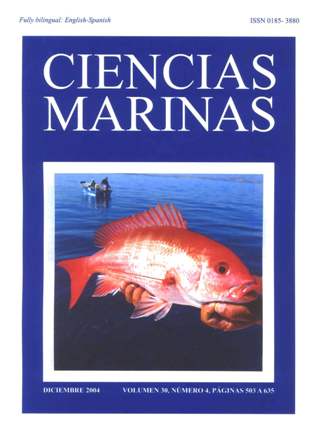Geochemical phases of Fe and degree of pyritization in sediments from Ría de Pontevedra (NW Spain): Implications of mussel raft culture
Main Article Content
Abstract
To assess the influence of mussel raft systems on several geochemical and sedimentological properties (carbonate and organic matter contents, fractions of Fe and degree of pyritization), six sediment cores were collected from the Ría de Pontevedra area. Four of those cores were collected in mussel raft areas (biodeposits) and the other two in adjacent areas where mussel rafts do not operate. The degree of pyritization (DOP) varied between 11.89% and 67.30%, with a mean value of 46.36 ± 13.15%. The maximum values of DOP were obtained in sediments from the mussel raft areas, which in turn showed higher values of pyrite Fe, organic matter and mud than the areas without mussel rafts. On the contrary, in the latter areas, coarser sediments with high carbonate content and Fe bound to silicates were the predominant phases. The results show a dominance of more reducing conditions in the biodeposit areas than in the adjacent areas. The DOP values indicate that reactive Fe was not totally converted to pyrite Fe. The significant correlation (r = 0.61) between DOP and organic matter confirmed that the latter is the limiting factor in pyrite genesis. These results allow us to conclude that mussel raft culture significantly changes the sediment texture and geochemical forms of Fe, with the consequent geochemical and environmental implications.
Downloads
Article Details
This is an open access article distributed under a Creative Commons Attribution 4.0 License, which allows you to share and adapt the work, as long as you give appropriate credit to the original author(s) and the source, provide a link to the Creative Commons license, and indicate if changes were made. Figures, tables and other elements in the article are included in the article’s CC BY 4.0 license, unless otherwise indicated. The journal title is protected by copyrights and not subject to this license. Full license deed can be viewed here.

